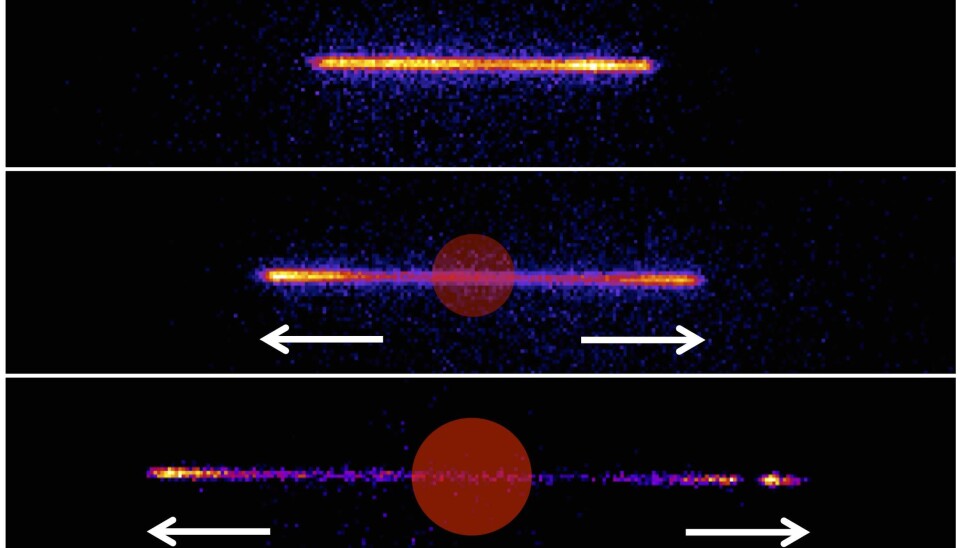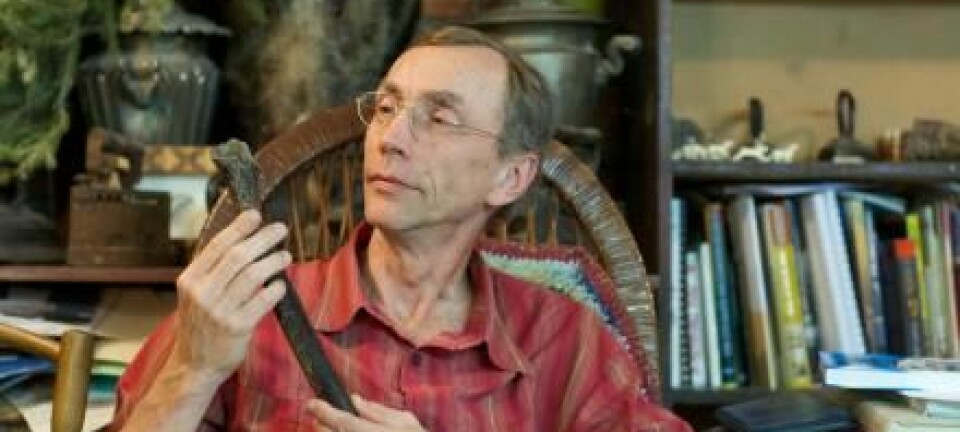
Scientists stretch DNA with lasers
New experiment could lead to better DNA sequencing and understanding of fluid physics
DNA molecules are most often a tangled mess and that’s a problem when scientists are trying to get an idea of what the DNA looks like.
A tangled molecule casts shadows on itself and scientists have great difficulty establishing where it begins and where it ends and it’s practically impossible to determine the distance from one point on the DNA to another.
For that reason scientists would like to be able to stretch out a DNA molecule in its full length -- and this is what a group of scientists have found a way to do.
In the study, recently published in Physical Review Letters, scientists from Denmark's Technical University (DTU) show how lasers can be used to take an individual DNA molecule and completely untangle it.
"This is an experiment with two different perspectives," says Jonas Nyvold Pedersen Ph.D from DTU's Department of Micro- and Nanotechnology.
Firstly, he says, they’ve shown how to untangle DNA so it can be photographed through a microscope. This makes it easier to get an idea of what the DNA looks like.
“Secondly, we can use the technique to get closer to understanding a physical phenomenon we have difficulty getting our minds round," he says.
Easier to interpret DNA
Associate professor of biophysics, Lene Broeng Oddershede, from the Niels Bohr Institute at the University of Copenhagen, studies the interaction between physics and biology.
According to her, the new study brings scientists closer to one of the really big goals of research.
"The major goal for the future is that one day we can stretch the DNA out and move it slowly through some kind of detector which then reads individual base pairs. This work brings us closer to an entirely new way of gene sequencing," says Oddershede.
Heat causes the DNA to stretch out
In the research, Pedersen and colleagues laid a single string of DNA into a microscopic channel in a tiny chip.
They then heated the middle of the channel using a laser so that the fluid around the DNA string was warmer at its centre than at its ends.
The differences in temperature initiated certain weak physical forces which caused the DNA to unravel.
These physical forces make the DNA molecules move away from an area that is warm and towards the cooler area. For this reason, the ends of the DNA moved in separate directions and as a result the DNA was almost entirely untangled.
"We succeeded in untangling 80 per cent of the DNA,” says Pedersen. “This is interesting.”
Unravelled DNA helps scientists piece together DNA puzzle
It’s interesting, says Pedersen, because the technique could come in handy when scientists want to sequence entire genomes.
When scientists do genome sequencing, they start of by cutting the entire genome up into millions of pieces which they then sequence and then try to piece together.
That creates problems when scientists are sequencing a new organism because they lack the knowledge of how everything fits together and it quickly turns into an attempt to assemble a jigsaw puzzle of 10 million pieces without knowing what each piece represents or what the finished picture should look like. This requires patience and enormous computing power.
By unravelling the DNA first, scientists can get a rough idea as to what the complete genome looks like and this makes it easier for them to assemble the puzzle afterwards.
Could improve knowledge of fluid physics
The other aspect of the new research has character of being basic science.
It's a question of understanding and describing what makes molecules move away from hot areas in fluids.
Scientists know why molecules behave this way in air or other gases but fluid physics are a good deal more difficult to understand -- some molecules, like DNA, move from hot to cold, while others move in the opposite direction.
The direction depends on which atoms the molecules are comprised of and also on the temperature. However, scientists do not agree on the correct explanation for this.
While the new study result doesn’t offer a new theory of how molecules behave, it does present a tool which other scientists can use in order better to understand the physics behind.
"Our technique will enable scientists to measure the physical forces on an individual molecule. Hopefully it will make it easier to understand which physical laws are behind the phenomenon," says Pedersen.
-------------
Read the original story in Danish on Videnskab.dk
Translated by: Hugh Matthews










